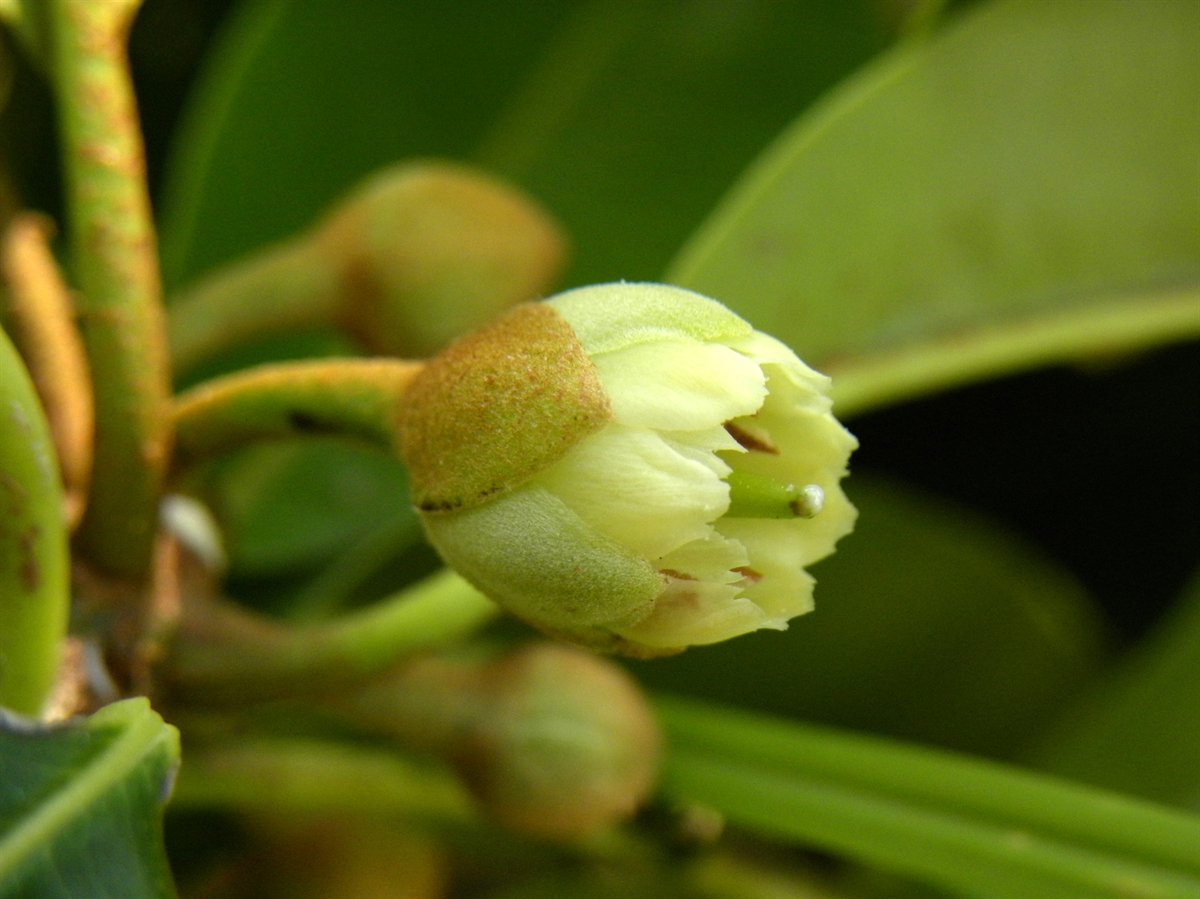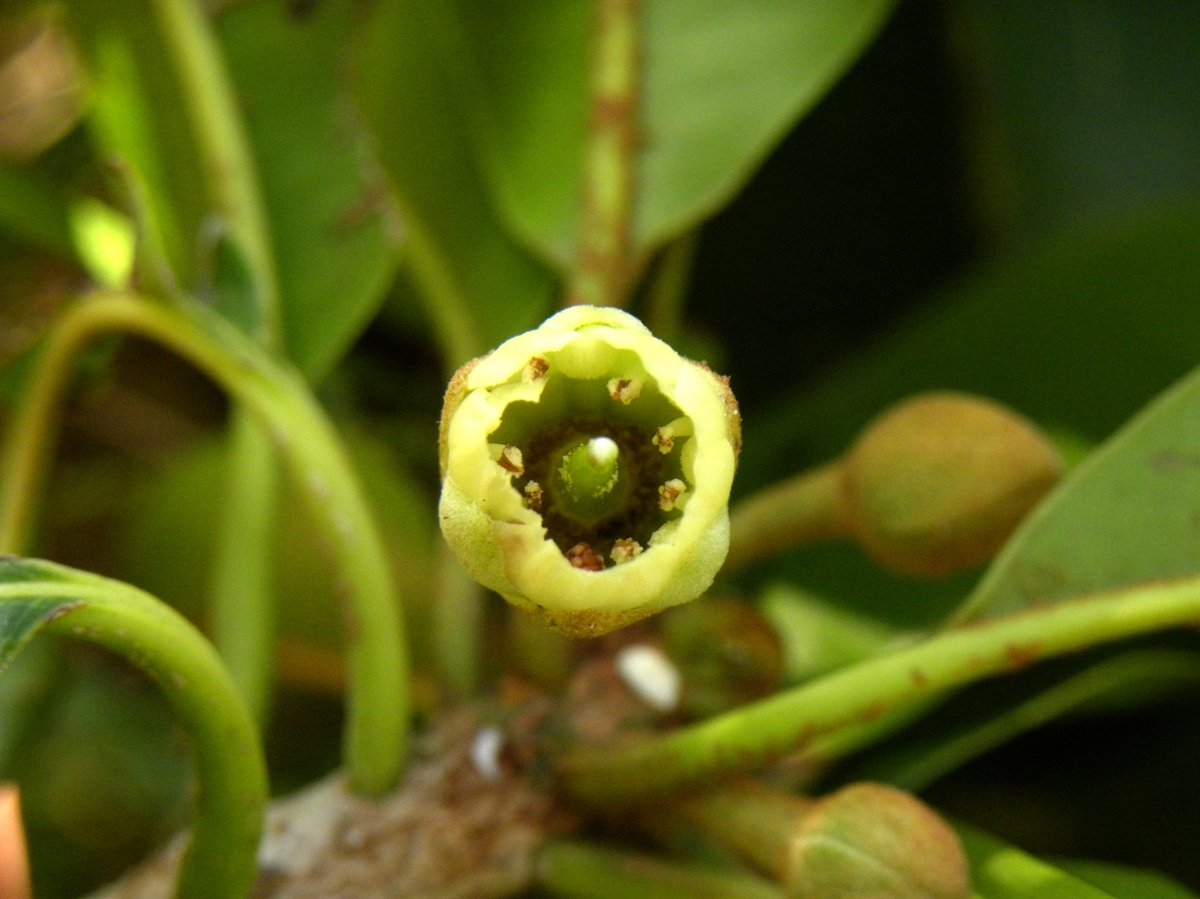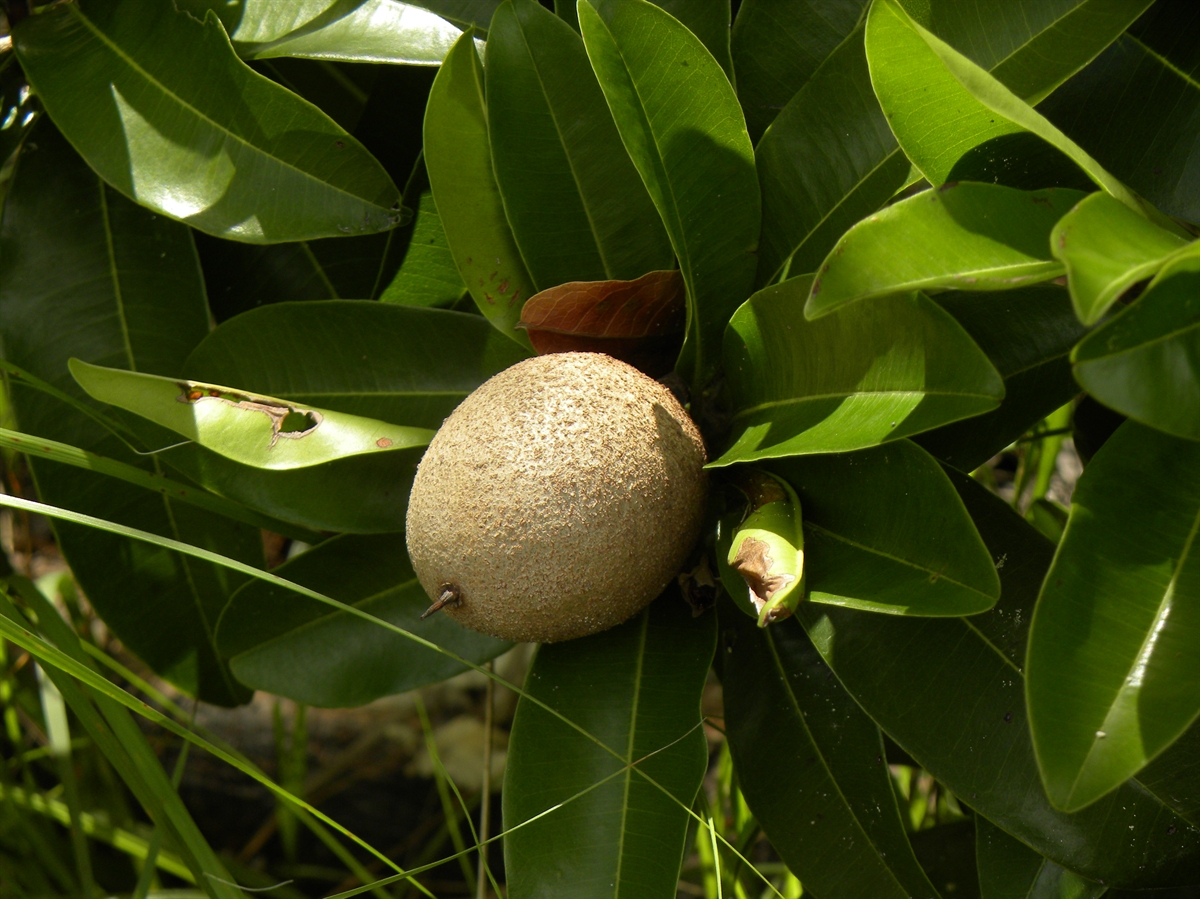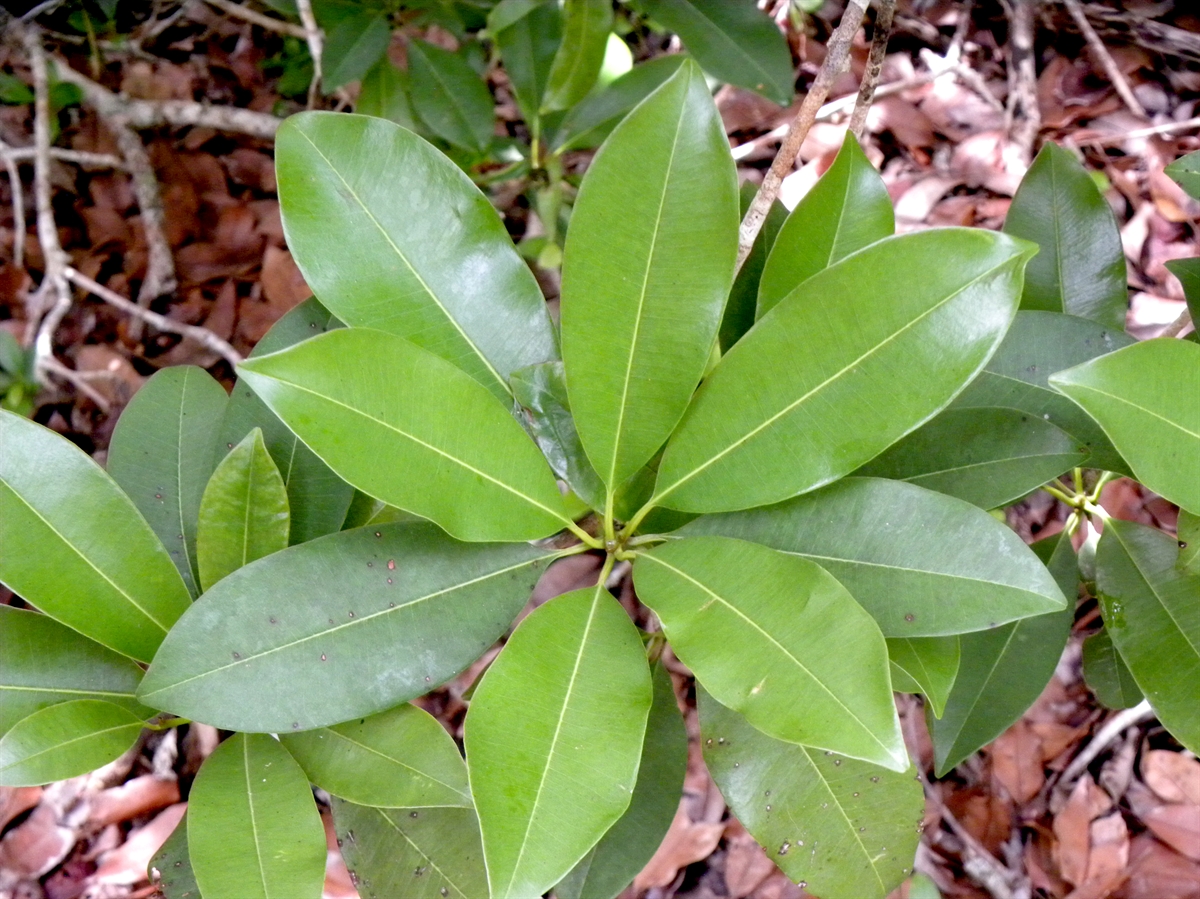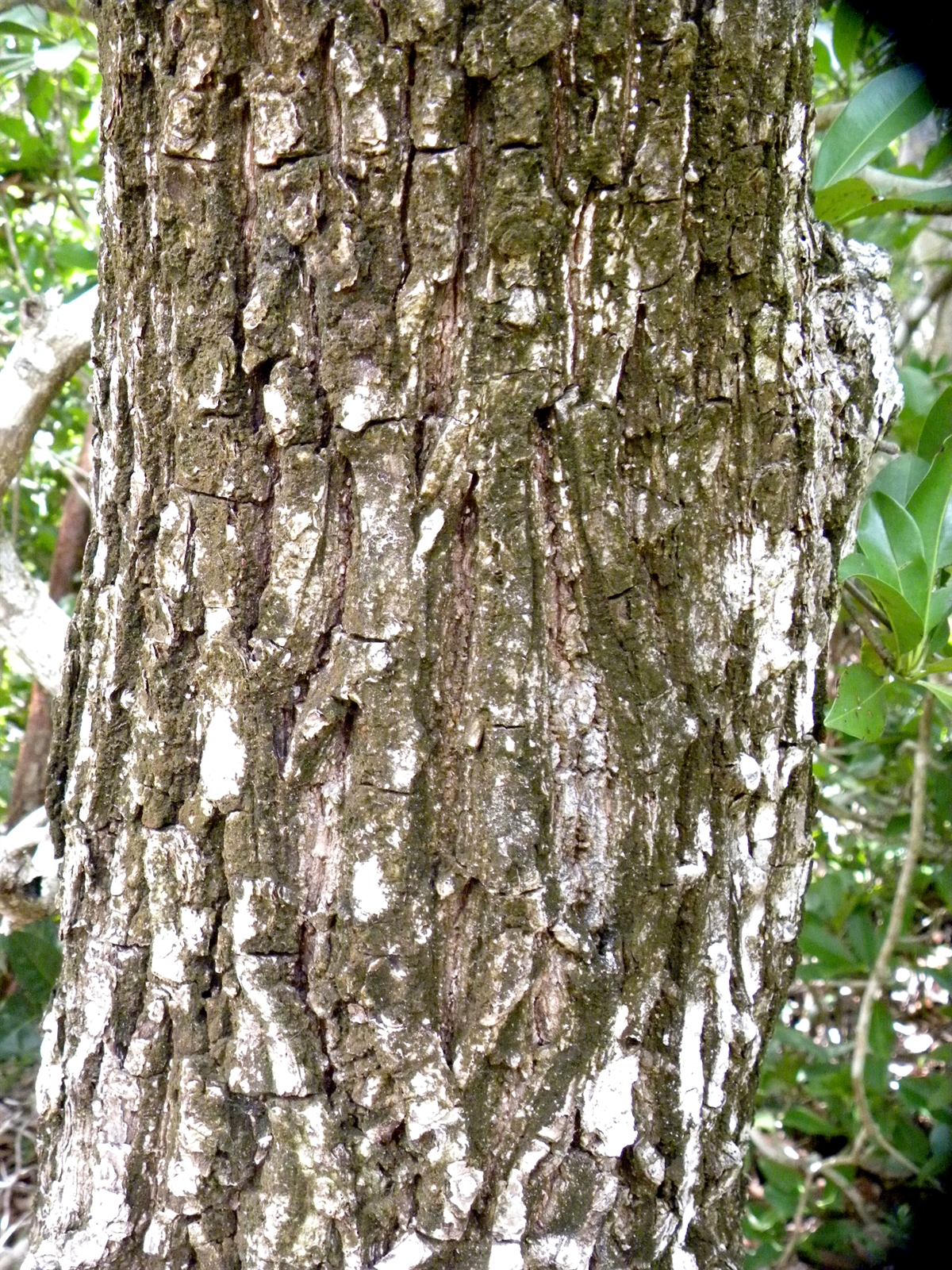Habit: Manilkara zapota grows as a medium to large tree up to 20 m in height and a trunk to 1 m in diameter. The leaves are arranged alternately and are clustered at branch tips. The leaves are lanceolate to oblong with an acute leaf apex and entire leaf margin. Young leaves and branch tips are covered with fine reddish brown hairs. All parts of the plant produce a milky sap.
The complete, perfect, actinomorphic flowers are arranged in clusters in the axils of leaves. The floral structures are covered in reddish brown hairs. The calyx has 6 unfused sepals. The corolla has 6 white petals that are fused into a shallow cup. There are 6 stamens fused to the rim of the corolla as well as numerous staminodia (non functional stamen like appendages). The ovary is half inferior with 6 locules and numerous seeds. The fruit is a berry that is light brown and scaly at maturity.
Habitat: Manilkara zapota occur as a cultivated tree in yards, farms, and along roads.
Distribution: Manilkara zapota is NOT native to the Lucayan Archipelago but occurs on all island groupings. It originated in Central America but is now dispersed throughout Florida and the Caribbean as well as both old and new world tropic and subtropics.
Medicinal/Cultural/Economic usage: Manilkara zapota is not used medicinally in the Lucayan Archipelago. It is grown for its edible fruits and the sap is used to make chewing gum. The wood has been used for carpentry
